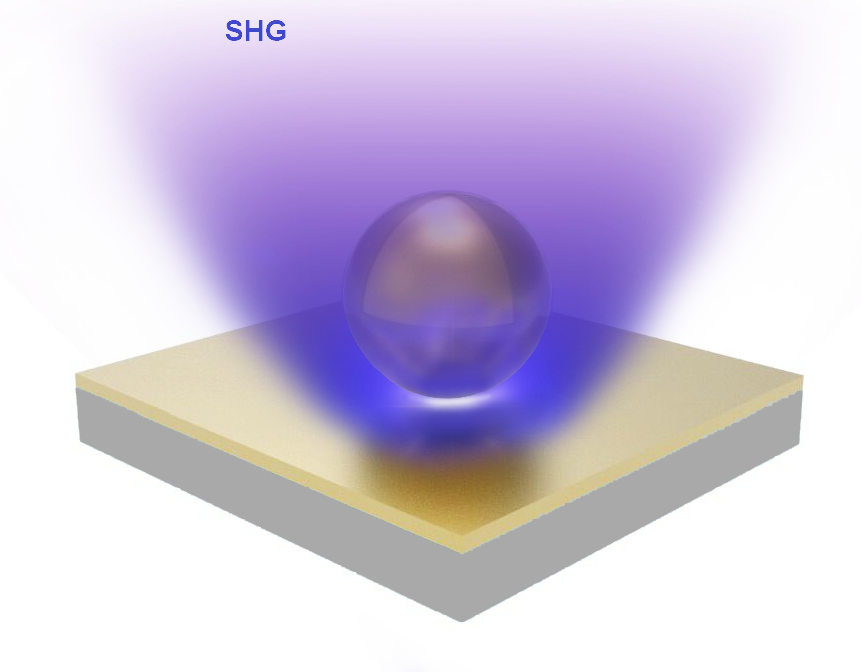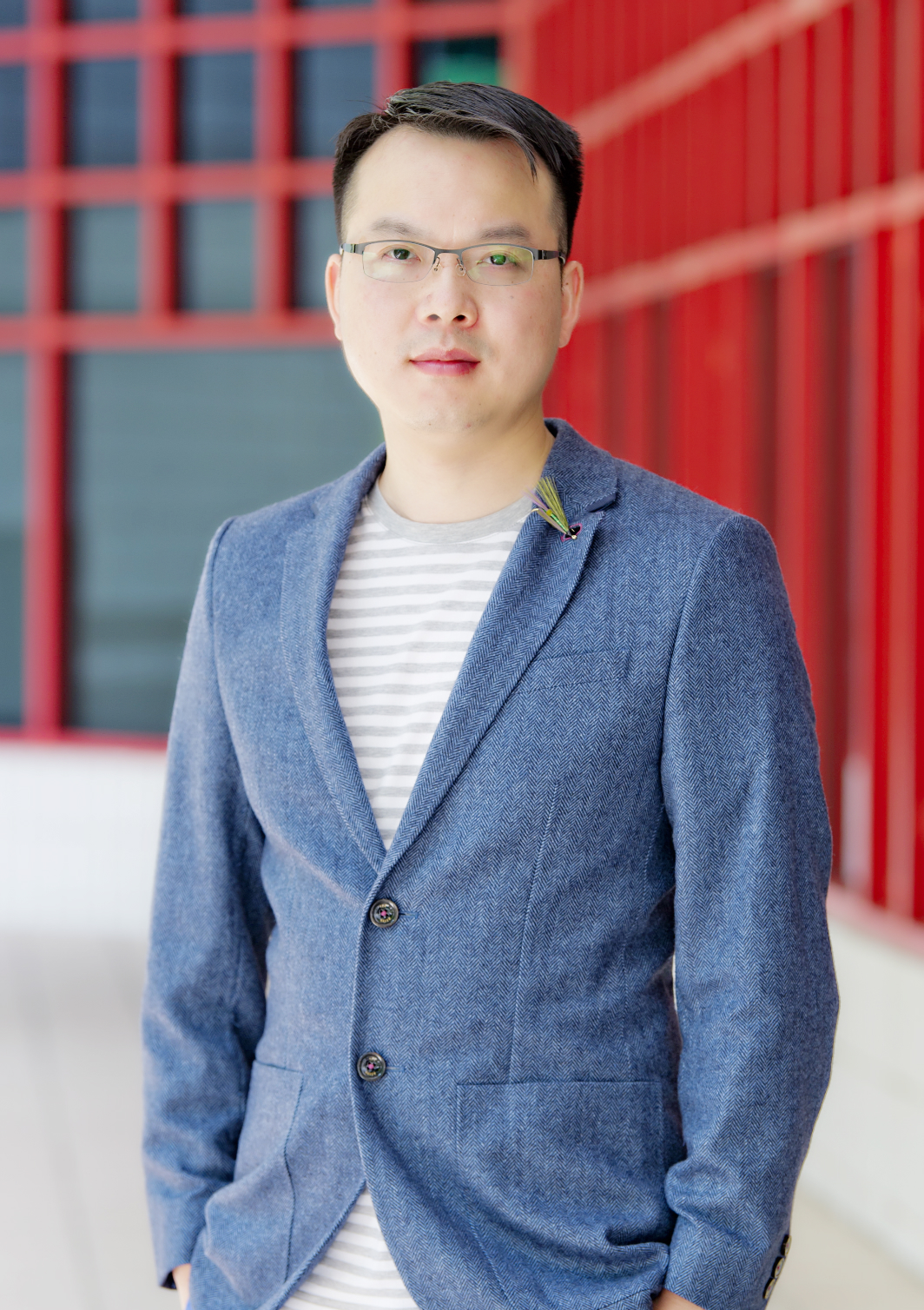A Novel nanophotonic system enhances light conversion efficiency by over 100-times
Efficient frequency up-conversion of light is highly demanded for a variety of photonic applications, such as imaging and sensing, but it remains challenging in nanophotonics and nanoscale optics. A breakthrough has been made in enhancing second-harmonic generation (SHG) efficiency by over 100-times from a novel nanoscale optical resonator, according to a collaborative study by researchers at City University of Hong Kong (CityU) and from UK. The team developed a new strategy for achieving highly efficient nonlinear light conversion, which can help manufacture nonlinear nanophotonic devices for high-resolution imaging and sensing of biological objects, ultrafast on-chip optical switches and quantum photonic technologies.
The research was jointly led by Dr Lei Dangyuan, Associate Professor of the Department of Materials Science and Engineering (MSE) at CityU and Professor Anatoly Zayats from King’s College London (KCL). The findings were published in the academic journal Nature Communications under the title “Light-induced symmetry breaking for enhancing second-harmonic generation from an ultrathin plasmonic nanocavity”.
Second-harmonic generation is a coherent three-wave mixing process in which the nonlinear optical materials absorb two photons with the same frequency (), and subsequently give rise to a third photon at exactly twice the absorption frequency (
). Due to the weak optical nonlinearity of common materials, such a coherent process usually occurs under strong laser pumping conditions.
In general, the second-harmonic generation has higher frequency conversion efficiency than other nonlinear optical processes, and is the most widely used. Second-harmonic generation is commonly used in fields like laser frequency conversion, high-resolution optical microscopy, biological and medical detection.
In the short wavelength range where the metal absorption is more significant, the plasmonic resonance effect is relatively weak. Since second-harmonic generation happens to be in this wavelength, it is difficult to be boosted via field enhancement induced by surface plasmon resonance.
The joint research team has overcome this challenge by building a nanostructured plasmonic system. The system exhibited exceptionally strong second-harmonic generation in the ultraviolet-visible spectral range, even in the absence of a surface plasmon resonance at the second-harmonic frequency.

Overcoming the lack of surface plasmon resonance

Firstly, the team manufactured a gold nanosphere of about 100nm in diameter and placed it on top of a gold film with silicon dioxide substrate underneath, to form a particle-on-film construct, which can generate strong electromagnetic asymmetry. As long as the gold nanosphere is closely attached to the film, the system would demonstrate strong second-harmonic generation, even in the absence of a surface plasmon resonance at the second-harmonic frequency.
The team named the system a virtual nanoparticle dimer (VND), which can be considered an analogue of a real nanoparticle dimer (RND) consisting of two identical gold nanospheres.
Three conditions for generating second-harmonic efficiently
Such a VND has an important hidden electromagnetic asymmetry induced at the second-harmonic frequency, resulting in the required three criteria favourable for efficient second-harmonic emission: (1) a gap plasmon resonance occurring at the fundamental excitation frequency;
(2) the electromagnetic asymmetry at the second-harmonic frequency significantly suppresses the destructive interference of locally generated second-harmonic light;
(3) related second-harmonic couples to a bright, vertical bonding dipole mode, making the system as a nanogap-based optical nano-antenna that efficiently radiates second-harmonic light into the far-field.

The team performed nonlinear confocal scanning measurements on the structure of both VND and RND, and found that VND, the team's newly designed structure, exhibited substantially brighter second-harmonic emission spots than the RND.
Under the same excitation condition, it is discovered that the second-harmonic intensity from a single VND is more than 13-fold higher than that from an RND with weak asymmetry. Moreover, compared with the complex double resonance plasmonic nanostructure, with only one gold nanosphere with a diameter of about 100nm, the new system can already enhance the conversion efficiency of the far-field second-harmonic generation by more than 100 times.
Facilitating the fabrication of nonlinear nanophotonic devices
In addition to the near-field enhancement of second-harmonic generation, Dr Lei pointed out that the proposed plasmonic system can also generate efficient far-field radiation of it, rendering a bright nonlinear light source at the nanoscale.
“We anticipate that the design strategy developed by our team can be generalised to other nonlinear nanomaterials featuring axis or inversion symmetry for highly efficient light conversion without the need of plasmon resonances at second-harmonic emission frequencies,” concluded Dr Lei.
The team hoped that ultimately they can produce nonlinear nanophotonic devices to provide bright nanoscale light sources for applications in quantum photonic technologies, high-resolution imaging and sensing of biological objects, and ultrafast on-chip optical switches.
The corresponding authors of this paper are Dr Lei and Professor Anatoly Zayats from King’s College London. The first author is Dr Li Guangcan, a visiting scholar from CityU’s MSE, now a Research Fellow at the School of Information and Optoelectronic Science and Engineering, South China Normal University. Other collaborating researchers are from South China Normal University and The Hong Kong Polytechnic University.


This work was supported by the Research Grants Council of Hong Kong, the Engineering and Physical Sciences Research Council (EPSRC, UK), the European Research Council, the National Natural and Science Foundation of China, and the China Postdoctoral Science Foundation.
DOI number: 10.1038/s41467-021-24408-x
